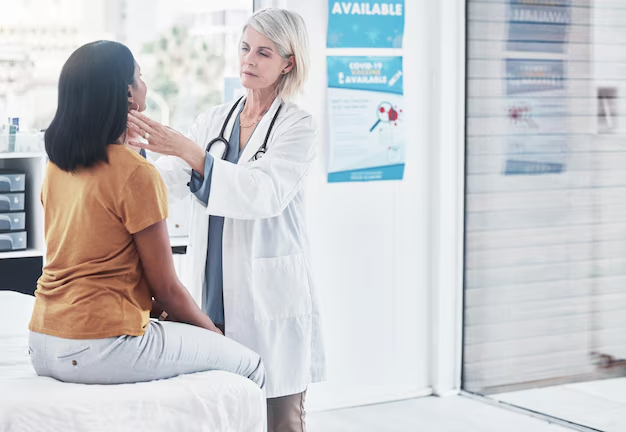Understanding Scoliosis: How to Identify Its Signs and Determine the Next Steps
Have you ever wondered about the bumps and curves of your spine or noticed something unusual in your posture? You’re not alone. Scoliosis, a spinal condition characterized by an abnormal curvature, often emerges unnoticed until a closer inspection or a routine check-up. As common as it is complex, understanding scoliosis can be an empowering step toward ensuring spinal health for you or your loved ones.
What Is Scoliosis?
Scoliosis is a condition where the spine curves sideways in an 'S' or 'C' shape. Unlike a normal spine that appears straight when viewed from the front or back, a scoliosis-affected spine visibly deviates from this line. Despite its prevalence in adolescents during growth spurts, scoliosis can affect individuals at any age, ranging from young children to adults.
Why Is It Important to Spot Scoliosis?
Early detection of scoliosis is crucial for many reasons:
- Prevent Complex Treatment: Early awareness can reduce the need for invasive interventions later on.
- Enhance Quality of Life: A timely diagnosis can lead to management strategies that alleviate symptoms and improve posture and mobility.
- Monitor Progression: Understanding your spinal health helps track any changes.
Recognizing the Signs: How to Tell if You Have Scoliosis
Identifying scoliosis requires keen observation. While a professional diagnosis is necessary, initial symptoms can often prompt an earlier visit to a specialist.
Physical Indicators
Uneven Shoulders: If one shoulder appears consistently lower than the other, it might be a sign.
Prominent Shoulder Blade: A noticeable bulge of one shoulder blade over the other can indicate a curve.
Unequal Hips: One hip appearing higher or sticking out more than the other might suggest scoliosis.
Asymmetrical Waist: When standing, if the space between the arm and the waist appears uneven, this might point to curvature.
Leaning Body: A tendency for the body to lean to one side reflects abnormal spinal alignment.
Functional Symptoms
- Back Pain: While not always present, persistent back pain can be an indicator, especially in adult-onset scoliosis.
- Breathing Difficulty: Severe curves can impact lung capacity, causing breathlessness.
- Fatigue: More energy may be required to keep the body upright, leading to fatigue.
The Types of Scoliosis
Understanding the types of scoliosis aids in recognizing and managing the condition. Each type requires unique attention:
Idiopathic Scoliosis
Most Common Type: Typically detected during adolescence, its cause remains unknown. It often requires monitoring during growth spurts.
Congenital Scoliosis
Present at Birth: Resulting from malformations in the spine during fetal development.
Neuromuscular Scoliosis
Associated With Medical Conditions: Common in individuals with conditions like cerebral palsy or muscular dystrophy.
Degenerative Scoliosis
Seen in Adults: Arising due to the wearing down of the spine with age, resulting in a curvature.
Options for Assessment: What Steps to Take
If self-examination raises concerns, several avenues can further clarify whether scoliosis is present.
Professional Evaluations
- Primary Care Visit: A doctor can evaluate visible symptoms and recommend further investigation.
- Orthopedic Consultation: Specialists in musculoskeletal conditions can perform detailed assessments.
- Chiropractic Assessments: Chiropractors may examine spinal health and suggest management strategies.
Diagnostic Tests
- X-Ray Imaging: Confirms scoliosis, measures the degree of curvature, and determines the precise location on the spine.
- MRI or CT Scans: These advanced imaging tools can provide detailed views, particularly useful if there are neurological complications.
Living with Scoliosis: Management and Lifestyle Adjustments
Once scoliosis is identified, adopting the right strategies can help manage living with the condition.
Non-Surgical Options
- Bracing: To prevent further curvature in growing adolescents.
- Physical Therapy: Strengthening and flexibility exercises tailored to individual needs.
- Pain Management: Medications or therapeutic techniques for discomfort.
Surgical Considerations
Surgery may be considered for severe or rapidly progressing curves. It can help stabilize the spine, relieve pain, and prevent potential complications.
Lifestyle Tips
- Exercise: Regular, appropriate activities maintain flexibility and strength.
- Posture Awareness: Mindful sitting and standing can reduce strain on the spine.
- Regular Monitoring: Keeps track of any changes in curvature or symptoms.
Fostering Understanding and Support
Recognizing scoliosis early opens doors to effective management and treatment, reducing its impact on daily life. Encouraging open discussions about spinal health and promoting routine checks can break stigmas and enhance understanding.
Building a Support Network
- Family and Friends: Share experiences and participate in activities to foster encouragement.
- Support Groups: Engaging with others living with scoliosis can provide invaluable strategies and moral support.
- Professional Guidance: Consultation with healthcare providers ensures tailored management plans.
Final Words: Taking Charge of Your Spinal Health
Be proactive; your awareness is the first step toward effective scoliosis management. While routine observations help detect initial signs, professional advice remains paramount. With knowledge and the right approach, scoliosis becomes a manageable aspect of your health journey.
Quick Summary for Scoliosis Awareness 📝
- Spotting Early Signs: Uneven shoulders, prominent shoulder blades, unbalanced hips, asymmetrical waist.
- Physical Symptoms: Back pain, fatigue, and breathing difficulties.
- Types of Scoliosis: Idiopathic, congenital, neuromuscular, and degenerative.
- Assessment Steps: Consultations with doctors or specialists; imaging tests like X-rays, MRI.
- Living Well: Physical therapy, bracing, postural exercises, and possibly surgery.
- Support Systems: Engage family/support groups for encouragement and advice.
🔍 Keep an eye out, stay informed, and consult professionals for health assurance!
